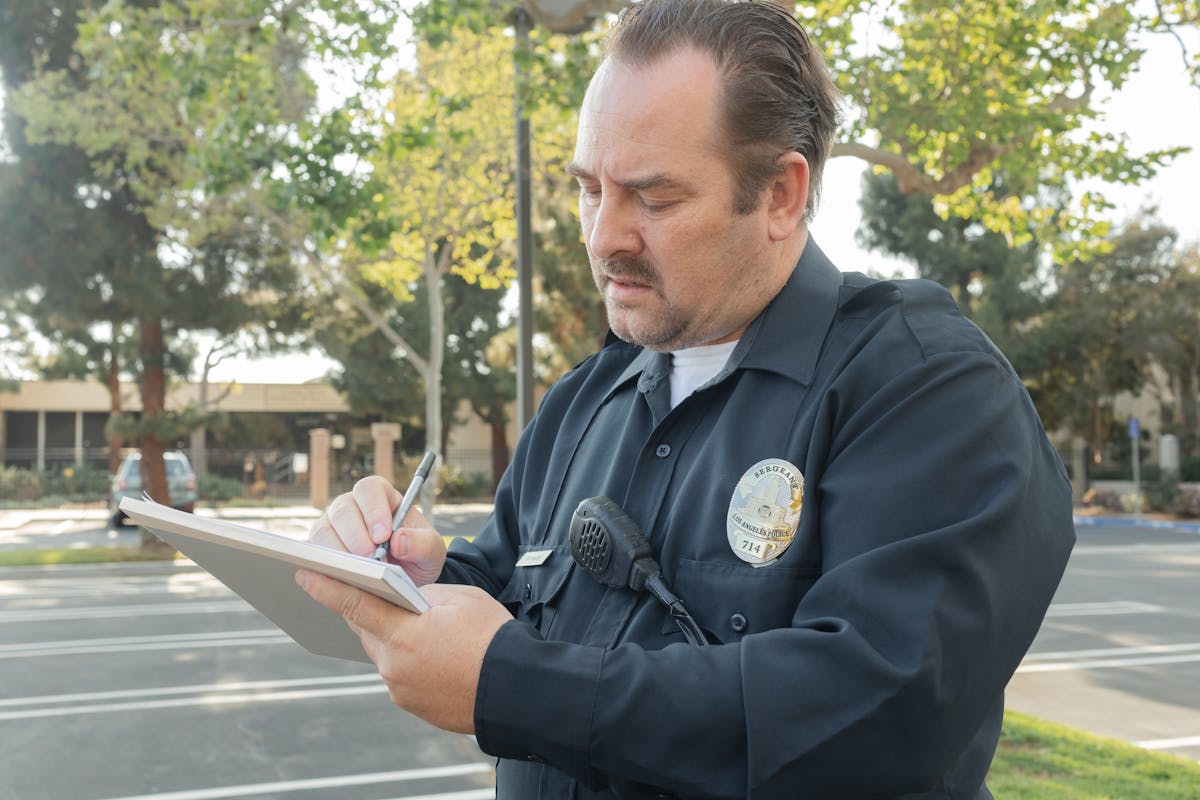
Process serving in California is a critical step in legal proceedings in the state, ensuring that all parties involved are properly notified of their rights and obligations. Following the proper method is essential to avoid delays, legal complications, or challenges that could jeopardize your case.
In this article, we’ll discuss how to serve someone in California, covering everything from who can serve papers to step-by-step instructions for proper delivery. You’ll also learn about common mistakes to avoid, tips for handling evasive individuals, and the importance of hiring a professional process server.
What Does It Mean to Serve Someone in California?
As implied, knowing how to serve someone court papers in California properly is vital, as failure to follow the correct steps can result in delays or even case dismissal.
You must adhere to specific rules when serving court papers. In California, the process server qualifications are straightforward but critical to follow:
- The individual serving the papers must be at least 18 years old.
- You cannot be a party to the case. This ensures impartiality and compliance with legal standards.
- You must serve the documents by the deadline.
- You must complete proof of service.
- You must give proof of service back to the complainant to be filed with the court.
In some cases, law enforcement officers, such as sheriffs or marshals, may also serve papers when requested.
Once these qualifications are met, the process server is responsible for delivering the documents in a manner that complies with California law.
Step-by-Step Guide to Serving Court Papers in California
Serving court papers in California requires careful adherence to legal guidelines to ensure the process is valid and enforceable. Below is a detailed, step-by-step guide to serving court papers effectively.
1. Understand the Rules for Service of Process
Before starting, familiarize yourself with California’s legal requirements for serving court papers. These include who can serve papers, acceptable methods of service, and deadlines for delivery.
Each type of case (e.g., civil, family law, or small claims) may have unique requirements, so it’s essential to consult the California Code of Civil Procedure or seek legal advice if you’re unsure.
2. Determine the Method of Service
In California, the following methods are commonly used:
- Personal Service: The process server delivers the documents directly to the recipient.
- Substituted Service: If personal service is not possible after reasonable attempts, papers may be left with a competent adult (e.g., a family member or co-worker) at the recipient’s residence or workplace.
- Service by Mail: In specific cases, such as small claims, documents may be sent via certified mail. The server must ensure a return receipt is obtained as proof of delivery.
- Service by Publication: When the recipient cannot be located despite diligent efforts, a court may permit the documents to be published in a newspaper of general circulation.
Carefully select the method based on your case’s requirements and the recipient’s circumstances.
3. Prepare the Necessary Documents
Ensure you have the correct documents ready for service. Common examples include summonses, complaints, subpoenas, and court orders.
Verify that all documents are signed and stamped by the court clerk where required. Having multiple copies on hand is also helpful for recordkeeping.
4. Hire a Qualified Process Server
Professional process servers are trained in the intricacies of California law and can handle complex cases, such as those involving evasive recipients. They are also more likely to provide reliable service without errors that could jeopardize your case.
5. Attempt Service
Once the process server is ready, they will attempt to deliver the documents using the chosen method.
For personal or substituted service, they may need to make multiple attempts at different times or locations.
It is vital to document each attempt, as this record may be required in court, particularly if alternative methods of service become necessary.
6. Complete a Proof of Service
After the documents have been served, the process server must complete a proof of service form. This legal document verifies that the service was completed correctly and includes critical details such as:
- The date, time, and location of service
- The name of the recipient
- The method used for service
- The name and signature of the server.
7. File the Proof of Service with the Court
Once completed, the proof of service form must be submitted to the court clerk. Ensure you meet the filing deadline, which varies by case type. Filing this document is a critical step, as it provides evidence that you have fulfilled your legal obligation to notify the recipient.
8. Follow Up as Needed
Monitor the recipient’s response and ensure they comply with any legal deadlines. If they fail to respond, you may need to take additional steps, such as requesting a default judgment or pursuing further legal action.
Common Pitfalls in Serving Court Papers and How to Avoid Them
Missteps can lead to delays, case dismissals, or unfavorable judgments. Here are common mistakes to watch for and strategies to prevent them.
Serving Papers Yourself
In California, the individual initiating the case cannot serve the papers personally. This rule ensures impartiality in the service process. Violating this can render the service invalid.
Again, engage a qualified process server to maintain the integrity of the process and ensure compliance with legal standards.
Incomplete or Incorrect Documentation
Errors or omissions in the proof of service can undermine the validity of the service.
So, ensure all forms, especially the proof of service, are meticulously completed with correct details, including dates, times, addresses, and the method of service.
Review documents thoroughly before filing to prevent mistakes.
Improper Method of Service
Familiarize yourself with the acceptable methods of service for your specific case type. When uncertain, consult legal resources or professionals to determine the appropriate method.
Serving the Wrong Individual
Delivering documents to someone other than the intended recipient can lead to significant legal complications. Verify the identity of the person being served.
Professional process servers are skilled in confirming identities to ensure proper service.
Ignoring Deadlines
Each type of case has specific timelines for serving papers. Missing these deadlines can lead to delays or dismissal of your case.
Be aware of and adhere to all service deadlines pertinent to your case. Mark calendars and set reminders to ensure timely service.
Understanding how to serve someone in California requires attention to detail and strict compliance with legal procedures. By avoiding these common pitfalls and following the prescribed guidelines, you can ensure that the service of process is executed effectively.
How to Handle Evasive Individuals: Serving Someone Avoiding Service

Serving court papers to someone intentionally avoiding service can be challenging. Here are effective strategies for how to serve someone who is avoiding service in California in this type of situation.
Make Multiple Attempts at Different Times and Locations
People avoiding service often do so by limiting their availability. You can counter this by making multiple attempts to serve papers at various times of the day, including early mornings, evenings, and weekends.
Visiting multiple locations, such as the individual’s home, workplace, or known hangouts, increases the chances of successful service.
Use Substituted Service
Generally, the law allows substituted service when personal delivery is unsuccessful after reasonable attempts.
Investigate and Track the Individual
Professional process servers often use investigative techniques to locate evasive individuals. These include skip tracing, which involves accessing public records, databases, and social media to track someone’s whereabouts.
Are You Being Served? Signs and Steps to Take
Recognizing how to find out if someone is trying to serve you papers in California can help you address the situation proactively.
Signs That You Are Being Served
- Unfamiliar Visitors: A process server or third-party individual may appear at your home or workplace repeatedly, often at different times of the day.
- Missed Deliveries: Notes or messages about attempted deliveries without specifics could indicate a process server is trying to reach you.
- Contact Attempts: Family members, co-workers, or neighbors might mention someone asking for your whereabouts or leaving messages for you.
- Mail Correspondence: In some cases, if substituted service is allowed, you may receive legal documents in the mail.
Steps to Take When Being Served
Accept the Papers
Avoiding service doesn’t stop the legal process; it can lead to alternative service methods that may still proceed without your acknowledgment. Accepting the papers ensures you have access to the full details of the case and can respond on time.
Read the Documents Carefully
Once served, review the documents thoroughly to understand the nature of the legal matter, deadlines for response, and any specific instructions.
Seek Legal Advice
If you are unsure about the implications of the papers or how to respond, seek legal consultation in California immediately. A qualified attorney can provide guidance on your next steps and help protect your interests.
File a Response
Follow the instructions provided in the court documents to file a response. Meeting deadlines is critical to avoid default judgments or other negative outcomes.
Document Everything
Keep copies of the papers and any related correspondence. This documentation may be useful in court or when consulting with legal counsel.
Remember—taking timely and informed action is the best way to safeguard your rights and navigate the legal process effectively.
Why You Need a Professional Process Server for Legal Compliance
Needless to say, hiring a professional process server is the best route to take when serving court papers in California. Here’s why…
Knowledge of Legal Requirements
Professional process servers are well-versed in California’s laws regarding the service of process. They know the proper methods and documentation required to meet legal standards, ensuring your case proceeds without delays.
Expertise in Handling Difficult Cases
When dealing with evasive individuals or complex situations, professional servers use proven techniques like skip tracing or stakeouts to locate and serve the recipient. Their training equips them to handle these challenges effectively.
Avoiding Errors
Mistakes in serving papers, such as using the wrong method or failing to file proof of service correctly, can jeopardize your case. Process servers minimize this risk by adhering to precise procedures and ensuring all forms are completed accurately.
Saving Time and Effort
Serving papers on your own can be time-consuming and stressful. By hiring a professional, you save time and gain peace of mind knowing the job is being handled by an expert.
Hire a Dependable Process Server in California Now!
Understanding how to serve someone in California involves navigating strict rules and avoiding common pitfalls that could delay or jeopardize your case. From choosing the right method of service to handling evasive individuals and filing proof of service, every step must be completed with accuracy and compliance.
That is where D&R Legal Process Service comes in. Our experienced team will assist you in delivering court papers with professionalism and precision.
Don’t leave this vital task to chance. Contact us today, and let’s discuss how we can help you!







